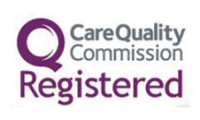Burnout is a state of emotional, physical, and mental exhaustion caused by excessive and prolonged stress, typically related to one’s work or professional environment. Burnout can manifest in a number of ways, including chronic fatigue, emotional detachment from work, and reduced performance in both professional and personal life.
While most of us experience work-related stress from time to time, in certain roles, unrealistic and unsustainable expectations go way beyond what anyone can bear in the long run. Burnout is more than an extra stressful period and has the potential to lead to significant mental and physical health implications, if allowed to continue unabated. Chronic stress also puts one at increased risk of developing mental health disorders and substance abuse problems.
With over two decades of experience in treating complex stress disorders, including burnout, Gladstones Clinic has established itself as a reliable and effective partner in helping individuals regain balance and a sense of control. Our integrative and holistic approach not only alleviates the symptoms of burnout but also effectively addresses any co-occurring substance abuse or mental health disorders.
Gladstones Clinic has a long history of helping people from all walks of life recover from burnout and develop personalised coping strategies.









